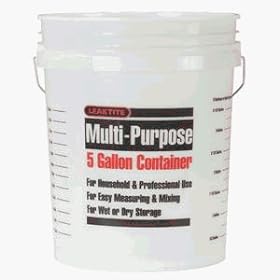yourhuckleberry
Member
I brewed a Bee Cave Brewery Kolsch that has been in primary for 3 weeks.
Yesterday I went to a friendly LHBS and asked for bottling bucket and a siphon to transfer.
He recommended against the bottling bucket because the spigot could be hard to clean and could create an infection. What I got was:
Racking Cane
Tubing
Bottle Wand
(I think he assumed I had moved to a secondary)
The recommended method on these boards seems to be use a bucket and prime the whole batch.
My Biggest problem is I don't know how much I have brewed. I halved the recipe to 2.75 gallons but am sure that I lost a bunch to a vigorous boil.
How do I know how much to sugar to prime with? I haven't marked my carboy (I have a picture at the bottom of the post).
My options it seems are rack to a 3 gallon carboy (which I have) and prime each bottle individually (boil and sanatize sugar solution first). That way I can be sure I am correctly priming as it is done per bottle.
OR
I could buy a plastic bucket (easier to gently stir) and prime the whole batch. If and only if I find out exactly how much beer I have in the primary so I know how much priming sugar to add.

Yesterday I went to a friendly LHBS and asked for bottling bucket and a siphon to transfer.
He recommended against the bottling bucket because the spigot could be hard to clean and could create an infection. What I got was:
Racking Cane
Tubing
Bottle Wand
(I think he assumed I had moved to a secondary)
The recommended method on these boards seems to be use a bucket and prime the whole batch.
My Biggest problem is I don't know how much I have brewed. I halved the recipe to 2.75 gallons but am sure that I lost a bunch to a vigorous boil.
How do I know how much to sugar to prime with? I haven't marked my carboy (I have a picture at the bottom of the post).
My options it seems are rack to a 3 gallon carboy (which I have) and prime each bottle individually (boil and sanatize sugar solution first). That way I can be sure I am correctly priming as it is done per bottle.
OR
I could buy a plastic bucket (easier to gently stir) and prime the whole batch. If and only if I find out exactly how much beer I have in the primary so I know how much priming sugar to add.










